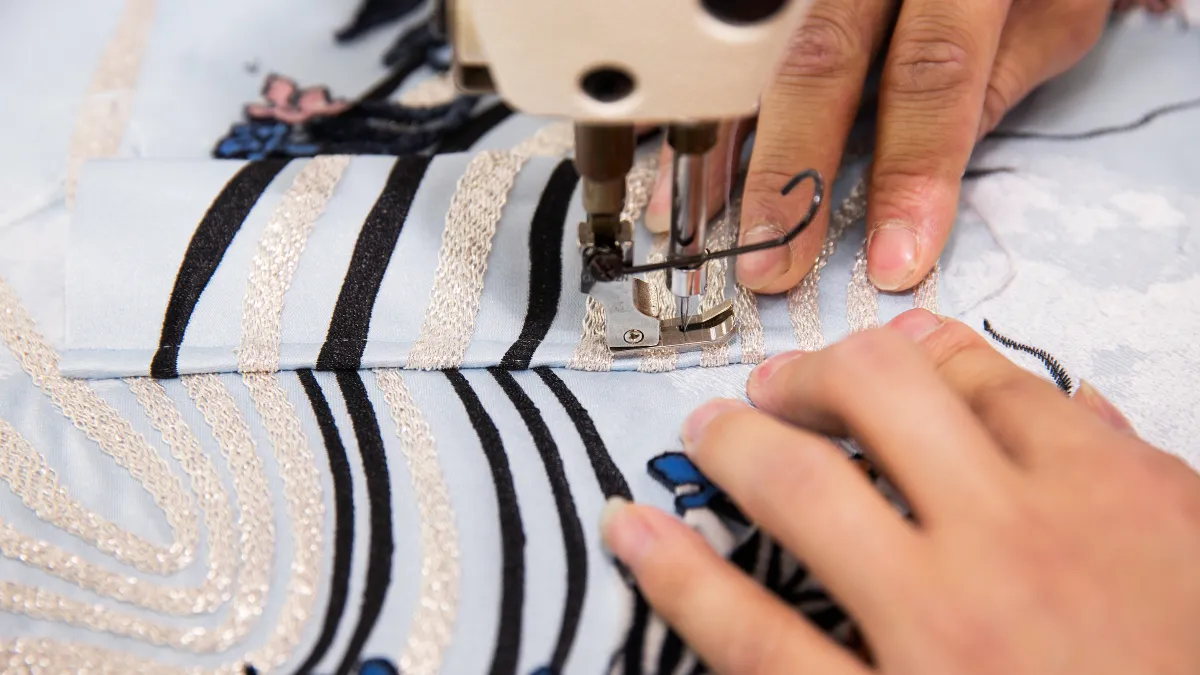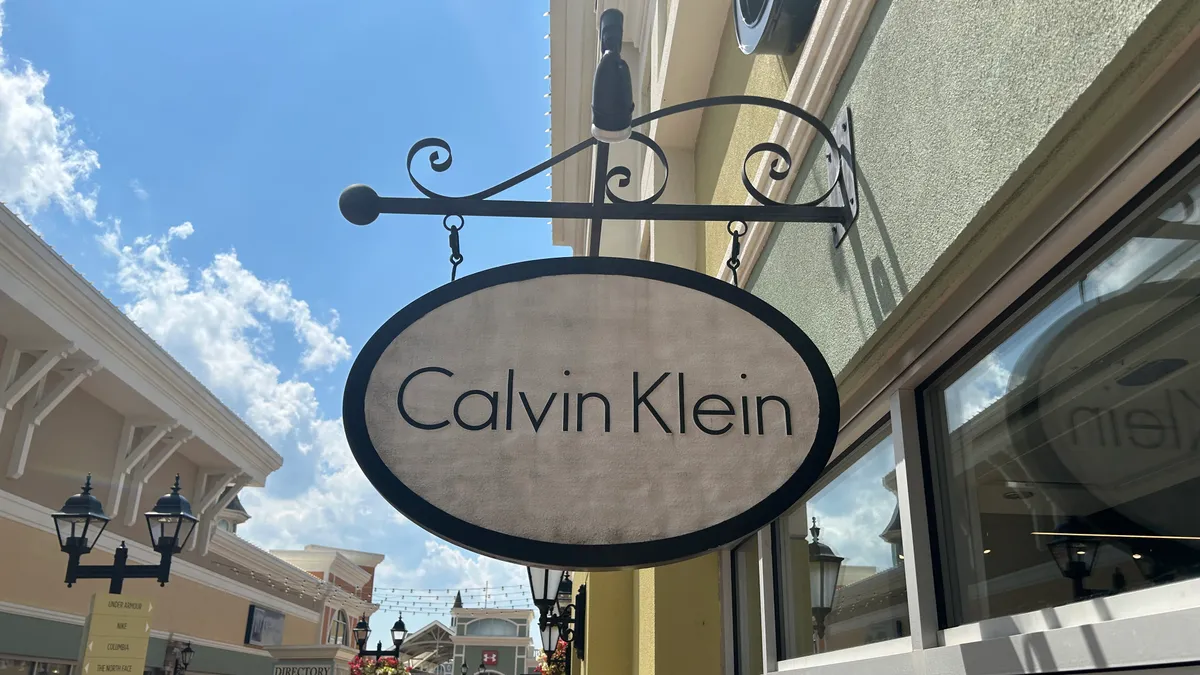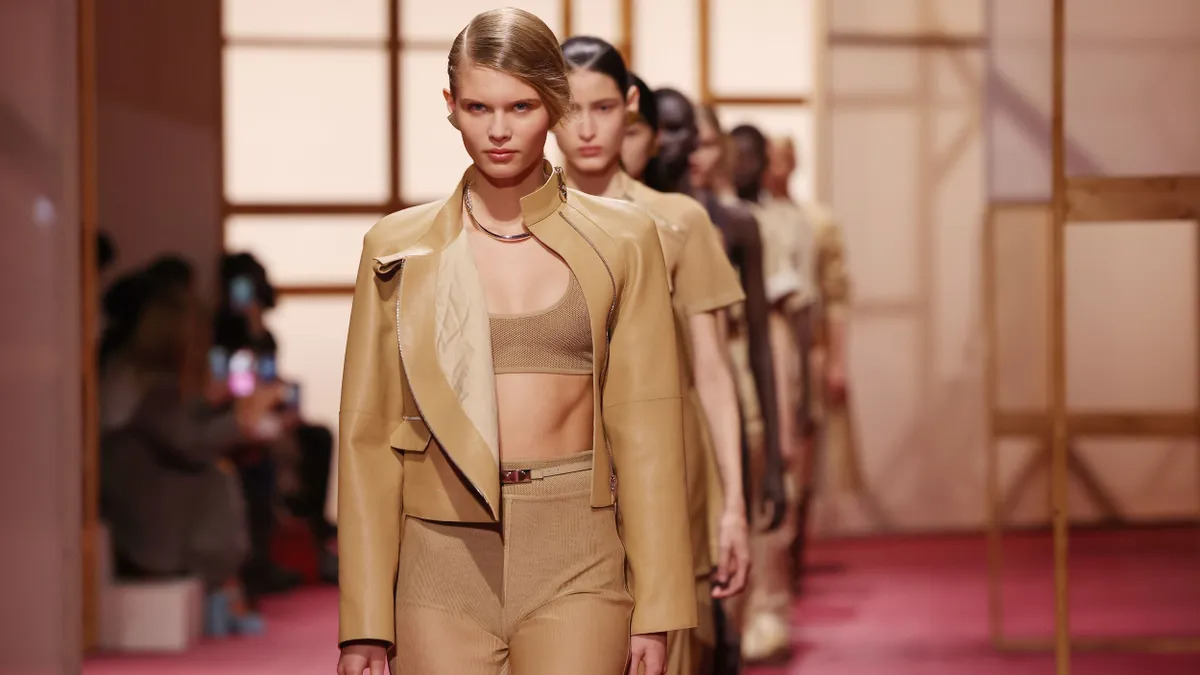With 4,968 stores in more than 70 markets, the H&M Group is not known as a boutique retailer. The company, with nine brands including flagship H&M, works with 2,383 supplier factories worldwide. Stores in the largest brand, H&M, rack up 800 million annual transactions. Yet, this high-volume retailer is focused on sustainability in all things, including textiles, a seeming contradiction in the fast fashion business.
"Since population is growing and natural resources are scarce, it is clear that a more focused approach to sustainable fashion is needed. Similarly, sustainably sourced bio-based materials are naturally grown or cultivated, and better from an environmental perspective," an H&M spokesperson wrote to Supply Chain Dive in an email.
| KPI | 2015 | 2016 | 2017 | 2018 | Goal |
|---|---|---|---|---|---|
| % of recycled or other sustainably sourced cotton | 34% | 43% | 59% | 95% | 100% by 2020 |
| % of recycled or other sustainably sourced materials of total material use | 20% | 26% | 35% | 57% | 100% by 2030 |
Source: H&M Group 2018 sustainability report
H&M Group uses recycled cotton, polyester, nylon, wool, cashmere, plastic, silver and down in some products. “Recycled materials are a win-win: they stop waste material from going to landfill and reduce the use of virgin raw materials, as well as chemicals, energy and water used to make them,” the spokesperson said.
H&M created its Conscious Exclusive collections using organic and sometimes recycled fibers along with alternative textiles like Orange Fiber and Piñatex (pineapple fiber).
Alternative textiles made from spoiled milk, mushroom root structures, spider silk and cellulose from wood pulp are also cropping up to supplement common fabric materials. But like creating any new business or product, scaling up a new fiber requires a lot of juggling.
Producing alternative fabrics at scale
Introducing or using a textile requires availability. Retail buyers demand minimum quantities of the material, and it falls to the supplier to meet those quantities, said Preethi Gopinath, director of the MFA Textiles program at the Parsons School of Design.
Orange Fiber textiles, made from citrus juice byproducts, were first introduced to the public in 2017, with a Salvatore Ferragamo collection. But it’s not at a stage where the manufacturer scaled up production enough to turn Italy’s 700,000 annual tons of discarded citrus into the new cotton.
"We are working hard to move forward in the R&D process to a point where we can scale up the technology and restart the production, with a long-term goal of optimising the costs of production," said Orange Fiber’s co-founder Enrica Arena on H&M’s website.
"Many of the sustainability challenges facing our industry require intense innovation to find solutions."

H&M
The H&M Foundation helped fund Orange Fiber’s R&D effort with a 2015 Global Change cash and accelerator support award, and it’s funding other startups as well. "We believe that a key in this development is investing in innovations, and many of the sustainability challenges facing our industry require intense innovation to find solutions," the spokesperson wrote.
Arena said Orange Fiber is focusing on improving the production process, making the product appealing for brands and searching for global investors and partners. The staff is working with citrus squeezers on their processes and with cellulosic industrial players, "to adjust to their standard of productions, while keeping in mind the brand’s requests and preferences that we discovered with our first production and testing our samples on the market with different players."
The cost of scaling up
Given the challenges in scaling up, collections using alternative materials need to be smaller than typical mass market offerings, Gopinath said. As a result, costs will be higher.
H&M is trying to be a pioneer in socially responsible clothing and its Conscious Exclusive collection is a small percentage of the products it sells. Brands catering to luxury customers can afford to introduce newer materials more easily. “Everything that’s new in terms of material will cost more, and the customer will pay for the novelty,” she said. The market allows for some flexibility in higher pricing for new materials, “but not radically.”
H&M would not share the cost of their materials, but its 2019 Conscious Exclusive collection of items containing alternative textiles ranged from $75 for a blouse made from Tencel lyocell, Orange Fiber and organic cotton, to $150 for a brocade jacket made with pineapple-leaf fiber, recycled polyester and polylactic fiber.
Lowering the price point involves producing larger volumes, using the economies of scale. Gopinath said PLA (polylactic acid) fiber was popularized in the early 2000s, as a fiber that feels and behaves like cotton. It was too expensive to produce T-shirts initially. But now almost two decades later, PLA production is at scale, and the fiber price has decreased. Customers can get a PLA T-shirt for $30 instead of the $15 they’d pay for a more traditional fabric T-shirt, she said, and customers may be willing to pay the higher price if it feels nicer. PLA is used in the Conscious Exclusive collection, blended with other fibers.
Shifting the model
Rather than asking how new textiles increase their scalability, Gopinath instead questions whether the mass market production premise should remain. "The answer is a straightforward no," she said. That’s because the tide is turning and "no one wants to buy what everyone else is buying. The Millennial generation onwards is looking for curated experiences," she said.
The desire for bespoke clothing makes it easier to introduce newer fibers, as scaling up may have sourcing challenges. Pineapple has always been thought of as a fruit, so using other parts of the plant for fiber is a relatively new concept, Gopinath said. Pineapple fields don’t need to replace cotton fields, and don’t need to scale up to large volumes to provide a benefit. "Not everyone needs to wear pineapple fiber," she said. People will eventually have more choices in the types of fiber they want to wear.
"As we’re getting more craft oriented, we don’t mind a little flaw."

Preethi Gopinath
Director of the MFA Textiles program, Parsons School of Design.
The craft model changes the production process and doesn’t require the same uniformity as mass production, Gopinath said. Take natural dyes, for example. In smaller batches, variations emerge. "Color is one of the most difficult things to keep consistent in textiles," she said.
With mass production, companies demand identical products, or they reject the shipment. "What if it’s okay that one rack of blue T-shirts has six variations, because it was done in small batches?" Gopinath said. It involves reeducating the customers, and a shift in thinking from the manufacturer and retailer as well.
Gopinath said she’s working with a rug company that spent the last 50 years trying to perfect the color match that’s demanded in the U.S. "As we’re getting more craft oriented, we don’t mind a little flaw," to show that it’s a craft product, showing the human hand, she said.
Education and transparency throughout the supply chain
With new textiles or any sustainability efforts, education is integral to all parts of the supply chain. Manufacturers are already legally mandated to label every garment sold in the U.S. with its fiber content. But those savvy in marketing can use the label to educate the customer to improve visibility and ultimately sales. Sometimes this is done with hanging tags or QR codes on the label.
For the Conscious Exclusive collection, H&M provides upstream supply chain information online including:
- Factory name
- Production country
- Factory address
- Number of employees at the factory
- Supplier
- How long the supplier has worked with H&M
- A description of the material and how it’s sustainable
Education can also include a garment’s production expenses, including the cost to the environment, said Gopinath. That might result in consumers buying fewer products, but at higher prices, she said. "Consumption is out of hand. We’re consuming in quantities that are so unnecessary. Are we paying less because cost to environment is not considered in that [garment] cost?" she said. Even so, determining the cost to the water supply, land and pollution on a per garment basis is not an easy task, due to lack of visibility and data.
While retailer Everlane does not include environmental cost, it breaks down the expenses of materials, labor, transportation, duties and hardware on each item, in what the retailer dubs “radical transparency.” For example, a body suit retailing for $32 has a “true cost” of $13.07 ($4.16 for materials, $4.57 for hardware, $3.05 for labor, $0.94 for duties and $0.35 for transportation).
"No T-shirt really costs $5, if you think about process from growing cotton, the farmer livelihood and shipping from India or China," Gopinath said. If after adding in the actual expenses to reflect fair wages and environmental costs, and that T-shirt now costs more, it would affect consumption. "It would also raise the consciousness of people, when they buy."
This story was first published in our weekly newsletter, Supply Chain Dive: Procurement. Sign up here.





















